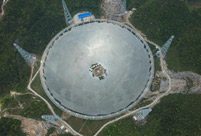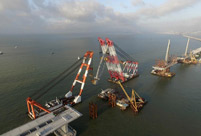


Illustration: Liu Rui /GT
During Chinese President Xi Jinping's current trip in Central and Eastern Europe (CEE), covering Serbia and Poland, his tour in Warsaw was more like a visit to a relative, since Poland is one of the first countries to establish diplomatic relations with China, and the two enjoy a profound traditional friendship.
The visit will undoubtedly boost the strategic partnership between the two countries and promote their collaboration on the One Belt and One Road initiative. Poland has showed great interest in the initiative, especially in foreign investment and joint work on its domestic infrastructural constructions, including highway, railway, bridges and space technology. In this regard, Warsaw is hoping to benefit from both Beijing's experience and funds.
Meanwhile, cooperation with Poland, China's largest trading partner in the CEE region, can help China expand its foreign investment and smooth the development of the B&R initiative in the entire CEE area. That said, both sides are wishing for more collaboration. Bilateral joint works have also resulted in fruitful achievements. For instance, Poland was among the first nations to join the Beijing-led Asian Infrastructure Investment Bank (AIIB) and the B&R initiative.
Nevertheless, the challenges of developing Sino-Polish ties should not be neglected. Poland has a very strong right-wing force. Warsaw has been pursuing a pro-EU and pro-US policy, with long-standing anti-China forces on its soil. This will without question affect the bilateral relationship.
Yet with the trend of globalization, the power of ideological differences and the Cold War mentality will gradually fade. No matter how strong such mentality is, it cannot disregard the needs of reality. The reality is that the economy in China is undergoing a revival and mutual need for enhancing China-Poland ties will grow stronger. Against such a backdrop, right-wing forces in Poland will only tail off into silence.
Poland is trying to attract increasing Chinese investment. Hence, every single Chinese enterprise abroad should keep a positive state of mind and a diplomatic manner toward foreign people, for they all represent the image of China. If we can tell Chinese stories well and establish a good image during reform and opening-up, the confrontation of ideologies will be diminished.
Over the past years, Warsaw's view over its relations with China has changed. According to media reports, before Xi's tour this time, many elites from Poland's political and economic circle have voiced that this visit was too late. They believe that Beijing has been placing its focus on the America, Southeast Asia and Africa, but from now on, it will rediscover the CEE region.
As a matter of fact, the 16+1 mechanism between China and 16 CEE countries has long been established, and Beijing has always attached great importance to the CEE region. However, with China's rising influence and global status, especially after the B&R initiative was raised, China began to increase its investment to the area. That's when the CEE nations noticed more urgent need than ever to further develop their ties with Beijing. Therefore, it's not that "China went there too late," but that Poland and the other CEE countries now have greater need for China.
The author is former director of the Institute of Russian, Eastern European and Central Asian Studies at the Chinese Academy of Social Sciences. opinion@globaltimes.com.cn Follow us on Twitter @GTopinion
 Five made-in-China hi-tech breakthroughs
Five made-in-China hi-tech breakthroughs Beijing Style: Hot pants
Beijing Style: Hot pants HK-Zhuhai-Macao Bridge to open to traffic
HK-Zhuhai-Macao Bridge to open to traffic China opens its first combined transport service to Nepal
China opens its first combined transport service to Nepal Students take stylish bikini graduations photos
Students take stylish bikini graduations photos Charming dancing students pose for graduation photos
Charming dancing students pose for graduation photos Guizhou, Yunnan section of Shanghai-Kunming railway connected
Guizhou, Yunnan section of Shanghai-Kunming railway connected Naked models transformed into landscapes, birds and even DRAGONS by body painting artist
Naked models transformed into landscapes, birds and even DRAGONS by body painting artist World’s biggest cruise ship Harmony of the Seas to start maiden voyage
World’s biggest cruise ship Harmony of the Seas to start maiden voyage Top 20 hottest women in the world in 2014
Top 20 hottest women in the world in 2014 Top 10 hardest languages to learn
Top 10 hardest languages to learn 10 Chinese female stars with most beautiful faces
10 Chinese female stars with most beautiful faces China’s Top 10 Unique Bridges, Highways and Roads
China’s Top 10 Unique Bridges, Highways and Roads US missile network hurts strategic balance
US missile network hurts strategic balance Govt urges Wukan to avoid radical actions
Govt urges Wukan to avoid radical actions Sexy student selfies a risky form of debt collateral
Sexy student selfies a risky form of debt collateral Mother stealing for sick child highlights poverty caused by serious illness
Mother stealing for sick child highlights poverty caused by serious illnessDay|Week